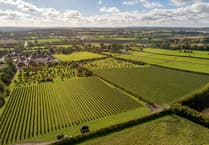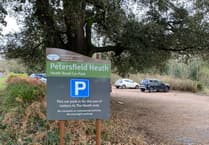East Hampshire is a beautiful and attractive place with tight-knit communities, breath-taking landscapes and a vibrant economy, writes East Hampshire District Council leader Richard Millard.
But as a result, it is one of the most unaffordable places to live in the country.
Rising house prices may be good for home-owners, but make it increasingly difficult for first-time buyers.
To address this, EHDC is committed to providing affordable homes, houses for sale at less than market value.
Our planning rules say a percentage of major developments must be affordable homes.
But to meet demand, every home built in East Hampshire would have to be affordable.
This imbalance affects young people in particular – they find themselves priced out of the communities they grow up in and feel part of.
And it’s estimated that by 2040 around 40 per cent of the district’s population will be over 65 – but how will care employers fill posts if potential employees can’t afford to live here?
So what can be done when no one affordable housing solution, shared equity, rent to buy or social rent, will suit everyone?
A mix of schemes across the district is needed that include as wide a variety of affordable schemes as possible – homes for older people, disabled people, families, singles and couples.
It’s not easy to provide everyone with the home they want, where they want it.
In the north of the district at Rowledge, we are investing more than £547,000 to provide four shared-equity homes for local people who have a mortgage but can’t afford market-rate housing.
This will be the sixth such scheme the council has funded with Merlion Housing Association, bringing the total to 43. And there are plans for more similar schemes.
One of the best ways to deliver affordable homes is through our Local Plan.
A consultation is launching on November 21, so if you feel strongly about this issue, make sure you take part.
The ultimate consequence of unaffordable homes is homelessness, something the council takes very seriously.
Rough sleepers across the district are comparatively few, but homelessness is often unseen.
You can’t see the people relying on friends to put them up – ‘sofa surfing’, as it is called.
We need to help these people into accommodation, give them a front door of their own.
Next month we are expecting to unveil ten homelessness pods in Whitehill & Bordon – temporary homes for those who need somewhere to stay while they get back on their feet.
These pods are being constructed inside, and alongside, the former Pinewood Village Hall.
It’s an incredibly innovative use of a defunct building that will bring real benefit to some most vulnerable people.
Affordable housing is vitally important for a thriving district, and the council is preparing a strategy to guide its work in the future.
It will be ready in the coming weeks.




